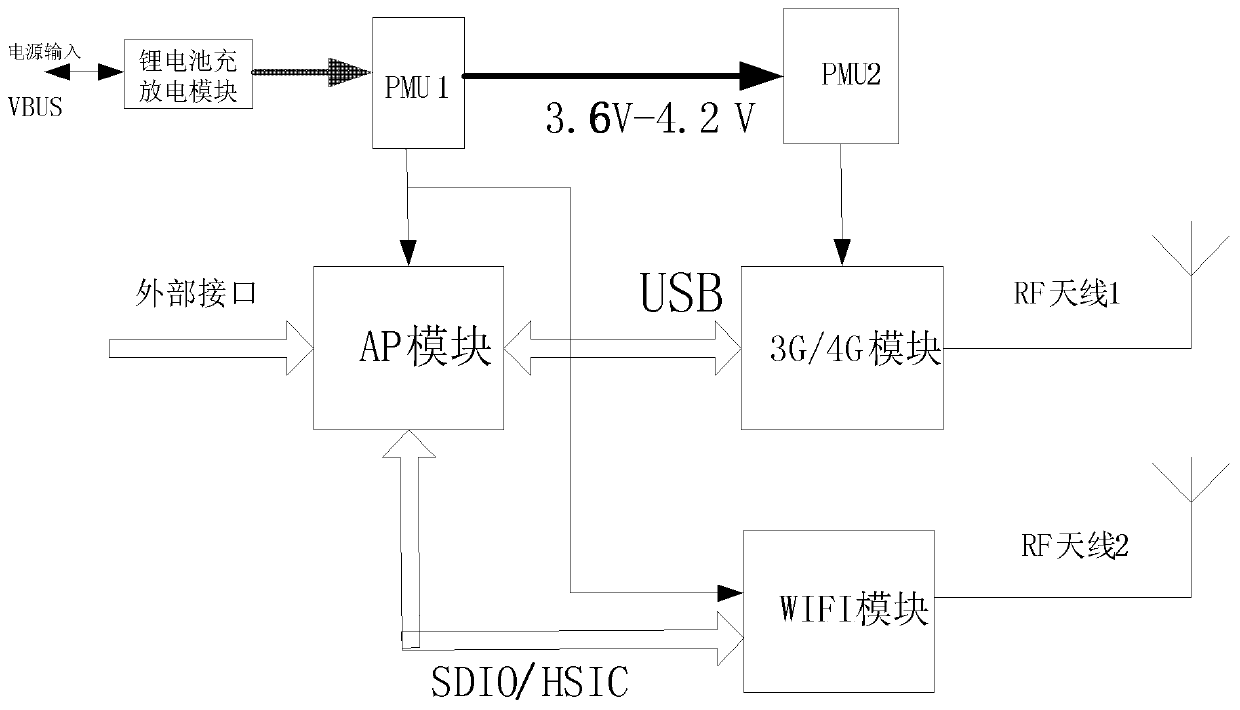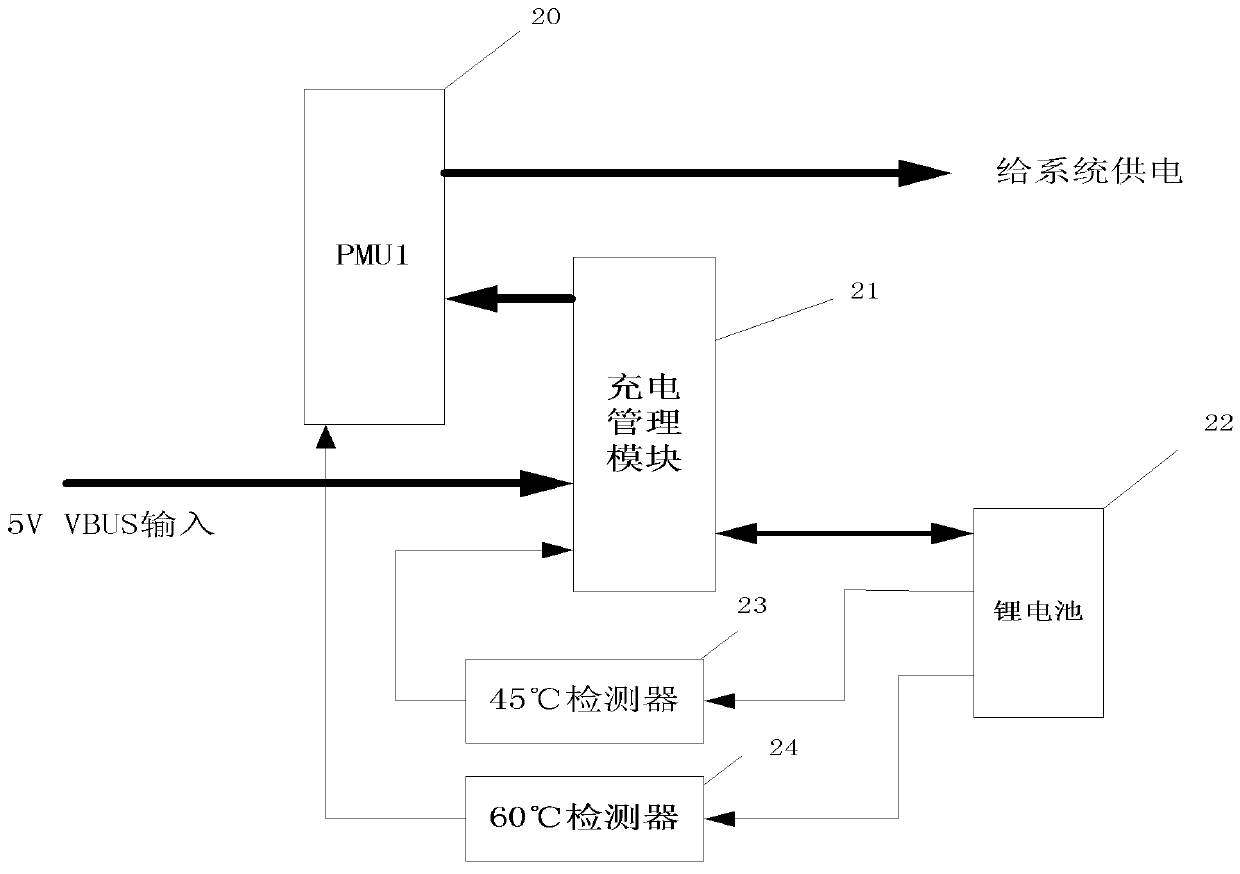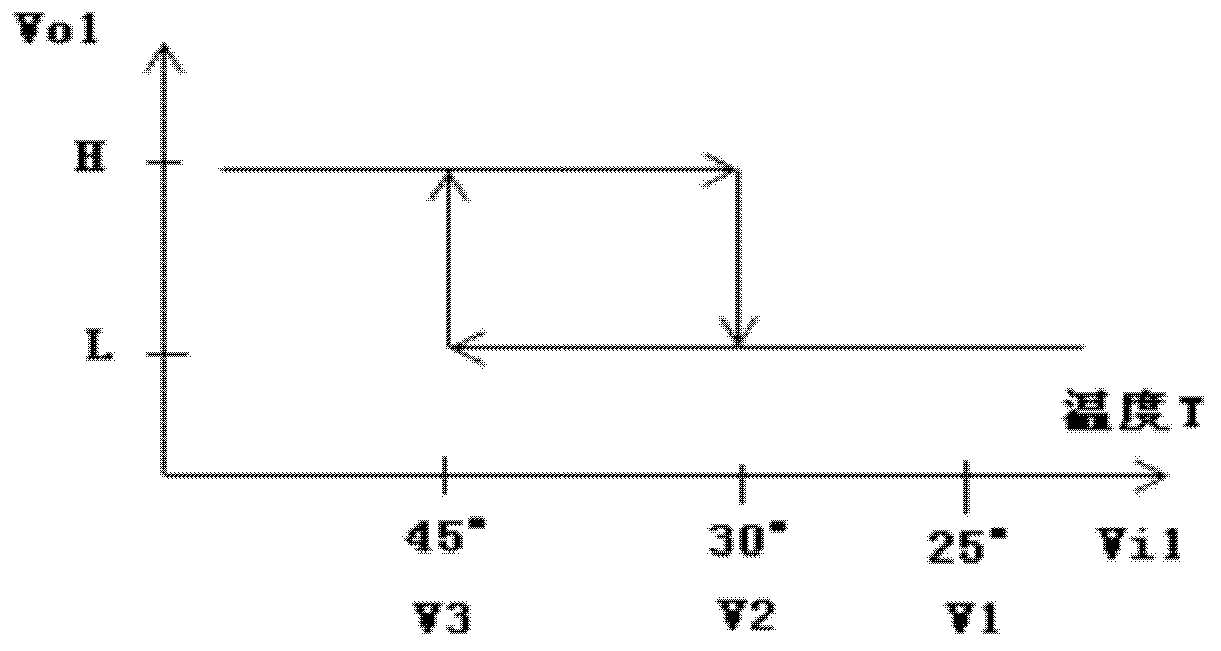A wireless data communication terminal and its battery overtemperature detection and protection device
An over-temperature detection and protection device technology, applied in battery overheat protection, battery circuit device, emergency protection circuit device, etc., can solve problems such as the increase of main CPU processing software business, increase in software function cost, system crash, etc., and achieve enhanced reliability. security, enhanced real-time performance and effectiveness, and reasonable hardware and software costs
- Summary
- Abstract
- Description
- Claims
- Application Information
AI Technical Summary
Problems solved by technology
Method used
Image
Examples
example 1
[0051] In this specific example, if Figure 5 As shown, the voltage comparator of the battery 45°C temperature detector is composed of 301 op-amp proportional operational amplifier U1 and peripheral resistors R1, R2, R3, R5, R4 and RNTC (battery internal NTC resistance), and its operational output is Vo1, Connected to the charging management unit circuit 302, used to control the charging enable switch (enabling charging or prohibiting charging). R1, R2, R3, R4, and RNTC are resistor networks, and Rf1 is the feedback resistor of the operational amplifier, which introduces deep negative feedback for the operational amplifier U1; resistors R1 and R1 form a voltage divider, connected to the input positive terminal of 301, and VCC power supply Divide the voltage to provide a suitable reference voltage for the operational amplifier U1, R2 and the thermistor RNTC with a negative temperature coefficient inside the battery form a temperature detector, which is connected to the input ne...
specific example 1
[0052] In the specific example 1, the 302 proportional operational amplifier U2 and R5, R6, R7 form a battery temperature detector at 60°C, and its output Vo2 is connected to the main CPU of the system, and the power management module PMU of the system, because the control of the PMU and CPU detects the battery temperature , that is, when the battery temperature reaches 60°C, the Vo2 output signal causes the PMU module to start the system shutdown process, or directly shuts off the main power supply of the system to stop the system from working. At the same time, if the system needs to be turned on next time, it needs to start the CPU to detect the battery temperature, that is, the CPU needs to detect the state of Vo2 at this time to judge whether the battery temperature has dropped below 60°C. Only when the temperature drops below 60°C is it allowed to start. process.
[0053] Among them, resistors R5 and R6 form a voltage divider, which is connected to the input negative ter...
example 2
[0055] The 60°C temperature detector described in the summary of the invention and the charging integrated IC (these integrated ICs mainly include MAX8903, QB2416X series, NCP185X system, but not limited to this) constitute a charging management unit, and the battery temperature detection and over-temperature protection are realized. Stop charging the battery at 45°C, and shut down the system at 60°C. In this example, if Figure 6 As shown, 401 is the charging management main chip, 402 is the main CPU small system in the wireless data communication terminal system (hereinafter referred to as the system) of the present invention, hereinafter referred to as the host Host, 403 is the connection between the host Host and the charging management main chip The communication interface (such as IIC bus, or GPIO interface, etc.), 404 is the battery temperature detection device, which uses an external resistor to connect with the ID pin of the lithium battery, which is equivalent to con...
PUM
 Login to View More
Login to View More Abstract
Description
Claims
Application Information
 Login to View More
Login to View More - R&D
- Intellectual Property
- Life Sciences
- Materials
- Tech Scout
- Unparalleled Data Quality
- Higher Quality Content
- 60% Fewer Hallucinations
Browse by: Latest US Patents, China's latest patents, Technical Efficacy Thesaurus, Application Domain, Technology Topic, Popular Technical Reports.
© 2025 PatSnap. All rights reserved.Legal|Privacy policy|Modern Slavery Act Transparency Statement|Sitemap|About US| Contact US: help@patsnap.com



